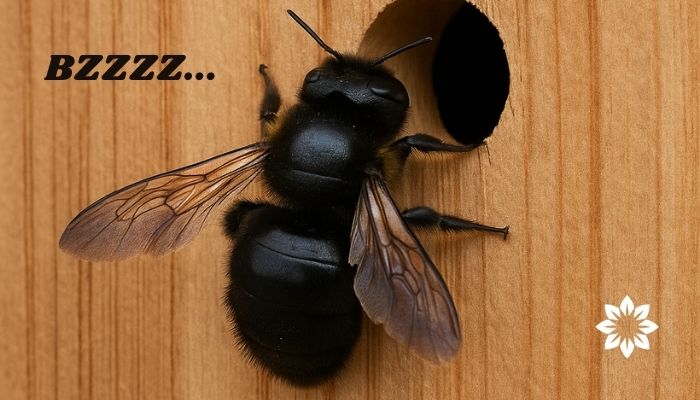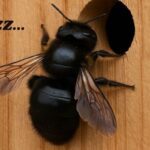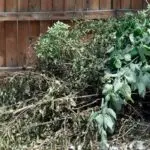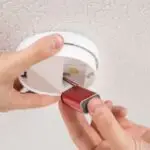What’s All the Buzz About (In Your Attic)? Spotting and Stopping Carpenter Bees in Fort Bend Homes
Until recently, I had no idea what a carpenter bee even looked like — much less that they were nesting right above my head.
It started with a strange buzzing sound in the attic. I assumed it was a wasp or hornet, maybe even a squirrel, but when I finally caught a glimpse of the source, I was surprised to see what looked like a large bumblebee drifting near the rafters. After a little research, I figured out what I was really dealing with — carpenter bees.
If you’ve heard buzzing near your eaves or noticed sawdust around your attic or trim, you might be facing the same situation. Here’s what I’ve learned — and what other Fort Bend homeowners should know about these sneaky pests.
What Are Carpenter Bees — and Why Are They in Your Attic?
Carpenter bees are often mistaken for bumblebees, but there are a few key differences. They’re similar in size, but carpenter bees have shiny, black abdomens (not fuzzy like bumblebees) and tend to hover around wood surfaces.
Unlike honeybees, carpenter bees are solitary. They don’t build hives — instead, they bore perfectly round holes into untreated or unpainted wood to lay their eggs. And unfortunately, attic rafters, fascia boards, eaves, and soffits are prime real estate.
Are Carpenter Bees Dangerous?
Good news: carpenter bees rarely sting. The males don’t even have stingers, and the females usually won’t attack unless provoked.
Bad news: they can cause serious structural damage over time. Each bee only makes a small tunnel, but year after year, they reuse and expand those tunnels — weakening the wood from the inside out.
Even worse, woodpeckers often show up to feed on the larvae inside the tunnels, turning a small problem into visible destruction almost overnight.
How to Tell If You Have Carpenter Bees
Here are some telltale signs to watch for:
- Perfectly round holes about the size of a pencil in wood siding, soffits, or rafters
- Small piles of sawdust (called “frass”) on the ground or on window sills
- Buzzing or hovering bees near your roofline or trim
- Visible bees flying into or out of the same hole repeatedly
In my case, I spotted the bees by accident while checking something unrelated in the attic — and I’m glad I did. Left unchecked, they could have done real damage over time.
What You Can Do About It
If you’ve noticed any of the signs above, the first step is identifying the activity safely. Look from the ground when possible, and avoid disturbing them up close. You can also gently inspect eaves and fascia boards for fresh holes or frass.
DIY treatments include sealing old tunnels with wood putty and repainting exposed wood to deter future nesting. Some people use bee traps or citrus oil sprays, which carpenter bees dislike. In more severe cases, you may need to contact a pest control pro.
Who Handles This? (Spoiler: It’s Not Me)
Just to clarify — I don’t offer pest control services, and I don’t work in attics or handle elevated repairs. But I do think it’s important for Fort Bend homeowners to know what carpenter bee damage can look like so you can catch it early and call the right kind of help.
If you discover activity or damage in your attic, eaves, or high trim, I recommend reaching out to a local pest control expert first. They’ll be able to confirm what you’re dealing with and help you safely remove the problem.
After that, you may need to contact a licensed contractor for any structural or high-access repairs — especially if fascia, rafters, or attic framing were affected.
Preventing Future Problems
Here are a few ways to discourage carpenter bees from coming back:
- Paint or stain exposed wood — they prefer untreated surfaces
- Use citrus oil sprays on problem areas (reapply regularly)
- Seal up old nest holes with wood filler, then paint
- Install bee traps in early spring before nesting begins
Routine inspections and a little preventative maintenance can go a long way. If you’re doing spring yard work, take a moment to look up — soffits and fascia boards are common target areas for these bees.
Final Thoughts: Keep an Eye (and Ear) Out
If you’ve heard buzzing in your attic or noticed suspicious holes in your siding or trim, it’s worth investigating. Carpenter bees aren’t aggressive, but they can be destructive — especially if the damage goes unnoticed.
While I don’t provide pest control services, I hope this post helps you recognize the signs and take action early. And if you ever need help with lawn care or general maintenance — get in touch.
Your attic shouldn’t be buzzing — and now you know what to do if it is.








